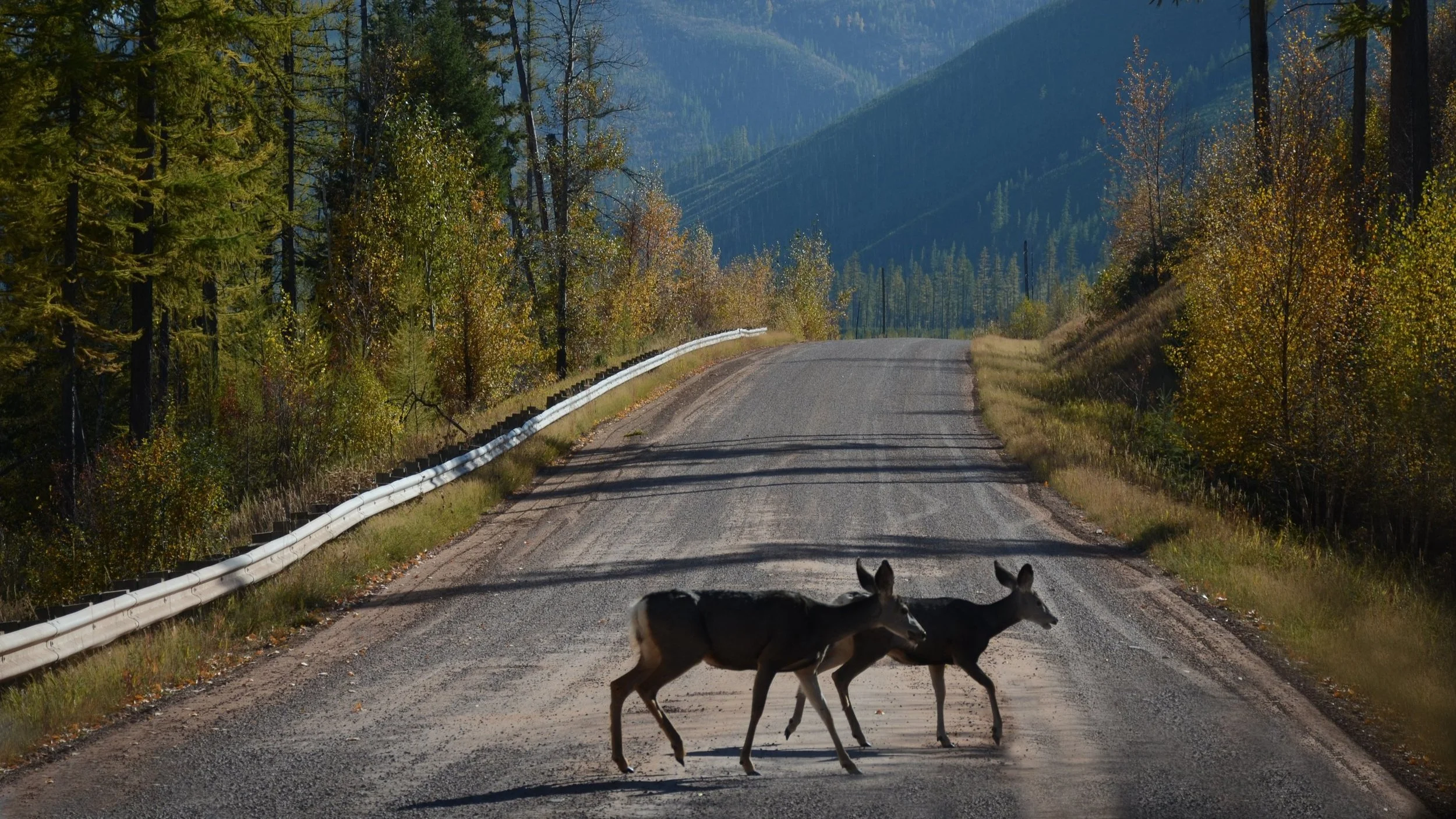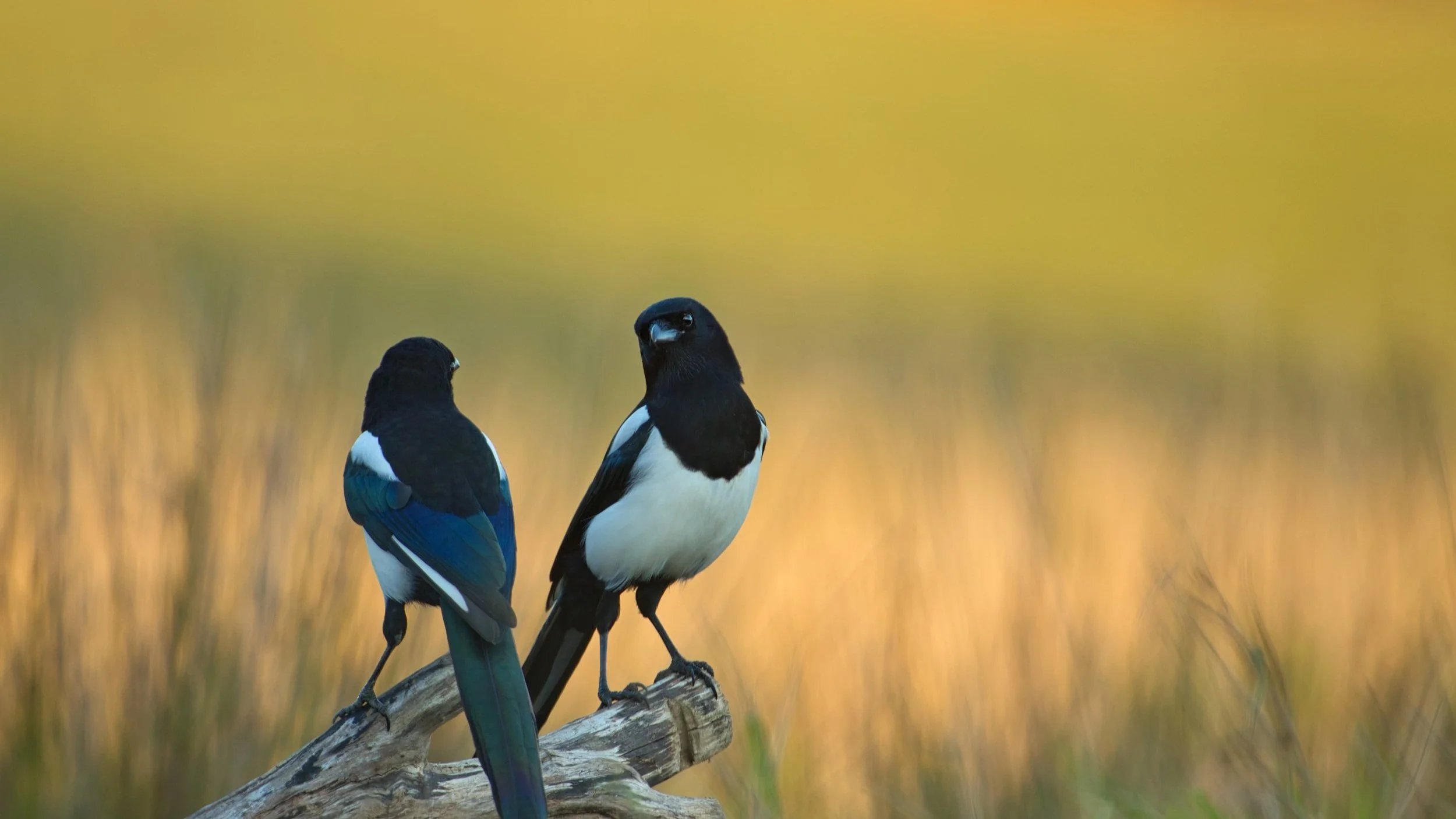Wildeor Voices: Reducing Wildlife-Vehicle Collisions for the Benefit of All
“Who are these animals, their lives gone out? What journeys have fallen apart here?”
About 15 years ago, when efforts to promote wildlife crossings were just getting started, I received a call from my good friend, colleague, and wildlife crossings advocate, Monique DiGiorgio. She called me to let me know that she had just collided with two mule deer on Interstate 90, outside of Bozeman, Montana. My first question was, “Are you ok, was anyone hurt?” “You mean besides the dead deer?” Monique responded.
Years later Monique told me another sad story – she and her daughter witnessed a black bear approaching Highway 160, outside of Durango, Colorado while an old, dilapidated car roared down the road. The car, its speed unchecked, hit the bear in a violent collision. After hurrying down the hill from the trail they had been hiking on above the roadway, they found a dead bear, and a driver verbally berating the corpse for the damage “it had done to his car,” while they wept for the bear.
Fast forward: This spring, U.S. Transportation Secretary Pete Buttigieg announced the launch of a $350 million grant program to support wildlife crossings, stating, “Every year, Americans are injured and killed in crashes involving cars and wildlife. By launching the Wildlife Crossings Pilot Program, we are taking an important step to prevent deadly crashes in communities across the country and make America’s roadways safer for everyone who uses them” (emphasis added). And State Legislators are embracing and providing millions of dollars for road crossing structures. All of this is great news! It is a result that we and our colleagues at conservation organizations across the country have worked for years to attain.
After almost twenty years of advocating for wildlife crossings, we have learned that, as reflected in Secretary Buttigieg’s words, the winning arguments have been all about us. With legislators worried about budgets and deficits, we cite facts and figures on how road crossings “pay for themselves” in reduced human death, injury, and property damages. With highway engineers, we talk about planning structures at the same time they are designing highways or repair projects, so as to not interfere with their construction schedules, and we emphasize the documented safety improvements (as measured by fewer collisions) of wildlife crossings.
But even with these successes, the continued impacts of our highways, railways, and affiliated structural developments (known as “linear infrastructure” in the road ecologist vernacular) on landscape integrity and biodiversity dwarf our successes. With impacts from climate change increasing and biodiversity steadily decreasing, we are in a race against mass extinction. So how do we make more progress on a timeline that meets our challenges? Perhaps we need to talk more about those wild lives so unexpectedly, brutally interrupted.
Historically, in advocating for wildlife crossings, we downplay the impacts on wildlife. “Of course, no one wants to hit a deer or see dead animals alongside the road,” we say to the legislator or engineer, who nods his or her head while agreeing, “Of course, no one wants to see that.” Perhaps we fear our effectiveness will be diminished if we play into someone’s preconception of conservation activists as “tree huggers” – we don’t want to come off as too soft, emotional, all ooey gooey.
Barry Lopez gets it right: “We treat the attrition of lives on the road like the attrition of lives in war: horrifying, unavoidable, justified.” Barry Lopez, “Apologia.” And we absolve ourselves by not thinking of the victims as prescient creatures with emotional lives, lumping the dead together as unfortunate “roadkill.” But, in our hearts, we know better. The evidence is all around us if we are willing to see it.
Marc Bekoff, a professor emeritus of ecology and evolutionary biology at the University of Colorado, is one of the world’s foremost experts on animal emotions. In his book “The Emotional Lives of Animals” Marc relates observing the behavior of a group of magpies. A magpie had been hit by a car and was lying dead on the side of the road. Four other magpies surrounded the corpse. One by one, they approached, gently pecked at it, and stepped back. One by one, each magpie flew off, brought back some grass, and laid it on the corpse. They then stood silently for a few seconds and one by one flew off. A magpie funeral?
He also relates a story of a troop of rhesus monkeys encircling an infant that had its back leg crushed by a car. The monkeys, in the words of a local official, “angrily” blocked traffic; meanwhile, some massaged the crushed leg and, in time, they carried off the injured and the road blockade ended.
You don’t need to be an expert like Marc to know that animals are more than instinctual automatons. Own a dog, cat, or parrot? Watch animal videos, like this one? You know what I know.
Animals killed on our roads are stories interrupted. As Marc Bekoff observes in his book “Rewilding in our Hearts,” our lives will always impact nature, but this is not an excuse to avoid seeking to balance conflicting or competing needs; we can commit to minimizing harm to nonhuman animals and nature by listening to the “voiceless” beings all around us, and proactively including their concerns in our decisions.
What might this proactive advocacy sound like? The first step can be a small one. Advocating for wildlife protection at the species level is a comfortable space for conservation biologists, and we can point out how death by vehicle endangers the recovery of threatened or highly endangered species.
For instance, the red wolf population of North Carolina hangs on by a thread: an estimated population of 120 wolves in 2012 has decreased precipitously to 15 in 2023 with death by motor vehicle a major contributor. In 2021, the U.S. Fish & Wildlife Service released four captive wolves to augment the wild population. Three were killed by cars soon after their release. On the other side of the continent, published studies have documented how the TransCanada Highway contributes to genetic discontinuity (fragmentation of populations) in grizzly bear populations in Alberta. And then there’s the Santa Monica Mountain Lions, and P-22.
Staying safely with well documented science principles, we can focus on the dispersal life stage of carnivores looking for new territory with food and potential mates. There are many to choose from; a number of which can be anthropomorphized as “epic” and “heroic” (we’ll get more into the issue of anthropomorphism next time).
For instance, late one June night in 2011, a cougar was killed by an SUV on Connecticut's scenic Merritt Parkway. Subsequent DNA testing revealed that the cat had traveled over 2,000 miles from South Dakota, a story documented, and well told, by Will Stolzenburg in his book “Heart of a Lion.”
That same year, a wolf from Oregon, OR-7, made his way into California, becoming the first wild wolf confirmed in the state in 87 years. The most recent “star” transplant was OR-93, a young wolf who in 2021 made national headlines as the first wolf in over 200 years sighted as far south as the southern Sierras and then west to San Luis Obispo and Ventura counties. His journey also ended when he was struck by a vehicle along Interstate 5 in Kern County.
Using these animals’ stories, we are able to portray animals killed by motor vehicles as more than just anonymous roadkill. These stories may cause a reader or listener to wonder: Where was he or she going? Why? How did he or she ever make it all that way? What can we do to prevent such tragic endings?
These animals’ stories can create change. Driven in part by public outcry over the death of a black bear, in 2019 the Sonora, Mexico State Congress passed a reform to the State Land Planning Law that makes wildlife crossings a mandatory element of Regional Land Management Programs.
Which brings us back to the story of P-22, the most famous mountain lion in the United States: a genetic, imperative dispersal story that has led to the biggest, most audacious, and most expensive road crossing ever built; and has taken the recognition of a wild animal as a fellow being entitled to its space on this land to a new level. We’ll explore what this means for our work in the next issue of Wildeor Voices. Stay tuned.



